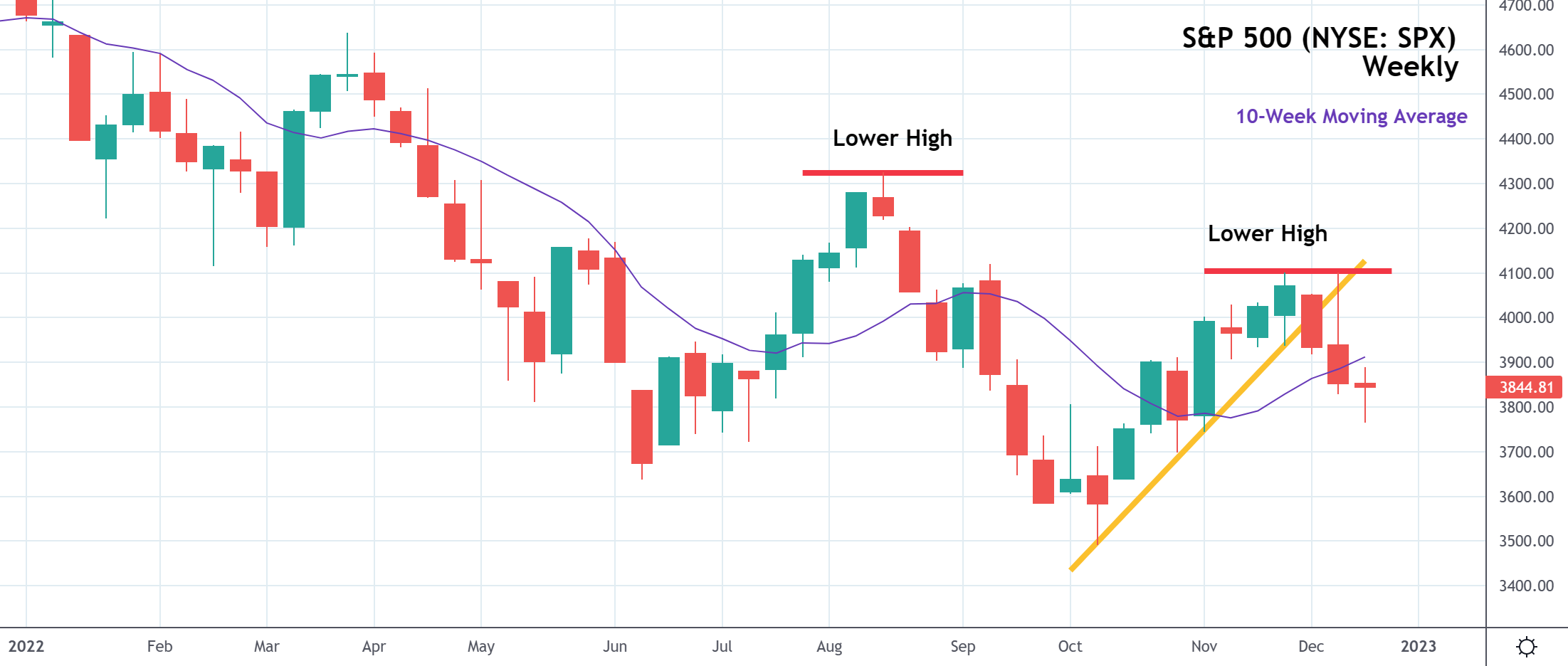US markets are closed today in observance of Christmas as traders spend time with kith and kin. But, around the globe, international equities managed to post minor gains. Stock indexes in mainland China (Hong Kong remained closed), Japan, and South Korea rose less than 1%. Indian stocks enjoyed the strongest session, rising more than 1% by comparison despite reduced liquidity.
News that China had abanded its “Covid Zero” policy boosted sentiment opposite inflation data out of the US – the core PCE deflator – which kept a lid on prices. Beijing’s policy shift could be significant, though, as Chinese infection numbers weighed on markets last week.
The bad news is that new Covid cases have gone parabolic in China. But the good news for bulls is that the Chinese government has now completely given up on tracking new daily infections, ending a nearly three-year-long tradition of fudging the numbers to make the outbreaks seem less severe.
The inaccuracy of the data became abundantly clear after several major Chinese cities reported infection tallies that far surpassed those provided by China’s National Health Commission (NHC).
For example, the Zhejiang province recently said that it was adding more than 1 million new cases per day, yet the NHC’s official total only showed 4,103 new infections for December 23rd.
That data obviously doesn’t jive, and now that China’s clear of “Covid Zero,” the question is what impact that will have on the rest of the world. And, in particular, US stocks.
We observed last week that because the Fed is insistent on raising rates into a recession, virtually every bit of economic data could potentially be received as bearish. Strong retail sales, for example, might be viewed as a bad thing, as they’re indicative of strong demand which would translate into upward pressure on inflation.
Weak retail sales, on the other hand, could be a sign that the coming recession will be worse than expected, making the Fed’s coming rate hikes that much more painful. Markets reacted poorly to a November retail sales “miss” ten days ago for this reason.
From here on out, bulls need “goldilocks” economic data that isn’t overly “hot” (strong) or “cold” (weak) for a major bullish reversal to take place.

On a technical level, however, it seems as though the next long-term bearish continuation may already be here. The S&P 500 has set a series of lower highs all year, the most recent of which coming in mid-November. The index also broke trend (yellow trendline) right after setting that lower high in terms of weekly candlesticks. Then, two weeks ago, the S&P closed below the 10-week moving average. When the S&P manages to breach both of these technical levels of support, it tends to trend lower for several months before bouncing higher again.
As a result, it’s likely that stocks are about to fall through the October lows in the coming weeks even though the S&P rallied to cap off trading last Friday.
Stocks could certainly open higher tomorrow, but reversing the market’s longer-term downtrend will be a tall order for bulls, especially with the big Wall Street trading desks still closed until the new year.







